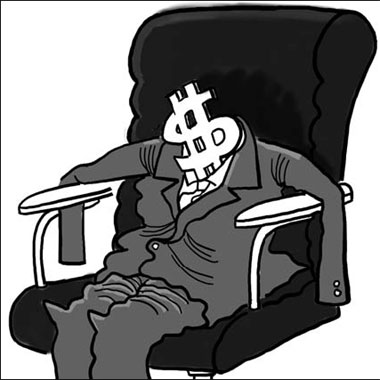By Martin Feldstein
How much further will the dollar fall? Or has it already fallen so far that it will now start to move back to a higher level?
 For travelers to the United States from Europe or Asia, US prices are dramatically lower than at home. A hotel room or dinner in New York seems a bargain when compared to prices in London, Paris, or Tokyo. And shoppers from abroad are loading up on a wide range of products before heading home.
For travelers to the United States from Europe or Asia, US prices are dramatically lower than at home. A hotel room or dinner in New York seems a bargain when compared to prices in London, Paris, or Tokyo. And shoppers from abroad are loading up on a wide range of products before heading home.
But, despite this very tangible evidence, it would be wrong to conclude that US goods are now so cheap at the existing exchange rate that the dollar must rise from its current level. Although the goods and services that travelers buy may cost less in the US than abroad, the overall price of American products is still too high to erase the enormous trade imbalance between the US and the rest of the world.
To be sure, the falling dollar over the past few years has made American products more competitive and has caused the real value of US exports to rise sharply - by more than 25 percent over the past three years. But the trade deficit in 2007 nevertheless remained at more than $700 billion, or 5 percent of GDP.
The large trade deficit and equally large current account deficit (which includes net investment income) implies that foreign investors must add $700 billion of US securities to their portfolios. It is their unwillingness to do so at the existing exchange rate that causes the dollar to fall relative to other currencies.
In falling, the dollar lowers the value of the dollar securities in foreign portfolios when valued in euros or other home currencies, shrinking the share of dollars in investors' portfolios. The weaker dollar also reduces the risk of future dollar decline, because it means that the dollar has to fall less in the future to shift the trade balance to a sustainable level.
But what is that sustainable level of the trade balance and of the dollar? While experts try to work this out in terms of portfolio balances, a more fundamental starting point is the fact that a US trade deficit means that Americans receive more goods and services from the rest of the world than they send back - $700 billion more last year.
The difference was financed by transferring stocks and bonds worth $700 billion. The interest and dividends on those securities will be paid by sending more "pieces of paper". And when those securities mature, they will be refinanced with new stocks and bonds.